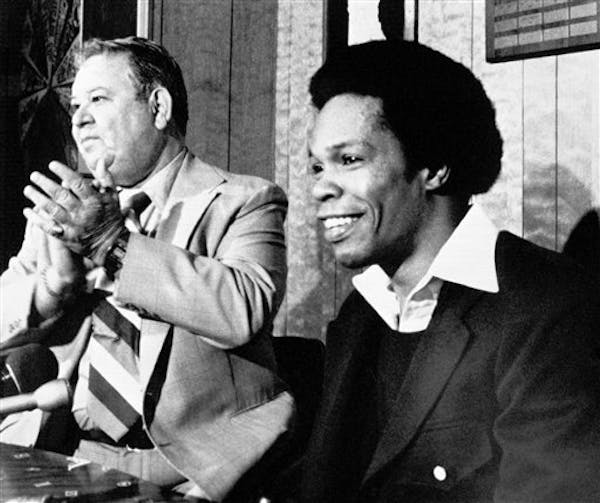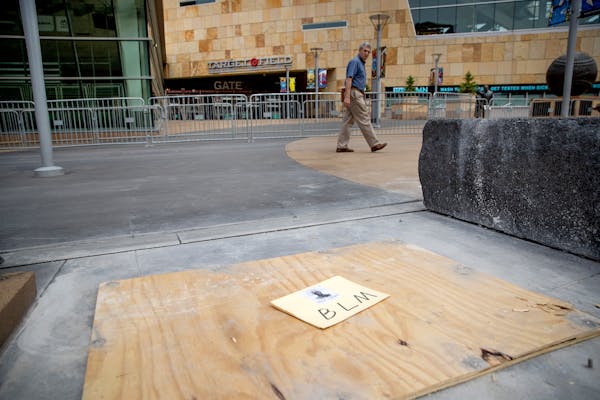A lot of people have a fundamental misunderstanding of what a statue represents and therefore incomplete information as to why taking down statues like the one of former Twins owner Calvin Griffith is so important.
Their argument goes like this: If you take down a statue, you are on a dangerous path that attempts to erase an unpleasant part of history. Why not leave up statues and monuments that we consider controversial and/or racist as teaching tools and talking points by which to avoid the same history?
That sentiment showed up in Star Tribune comments on Friday's story about the Griffith statue being removed from Target Field after the organization reconsidered Griffith's racist comments in Waseca 42 years ago.
A variation of that argument showed up in countless other instances, particularly on Twitter, in response to several other statues coming down nationwide in recent weeks.
It seems somewhat logical on its face. But the very people whose job it is to study and communicate history — historians! — also say it is incorrect.
In one particularly apt and smart Twitter thread, this is spelled out quite nicely by Bret Devereaux, an ancient historian who lays out the progression of statues and monuments — and what they symbolize — from ancient civilizations to present day.
The upshot comes in the middle of the thread, when Devereaux writes this: "Statues have always been about commemorating values, and have never been about teaching history. … Now, it isn't that we don't have large, publicly funded history teaching tools! We do! They're called museums (and also to an extent, battlefield parks)! But statues are not teaching tools. No history is lost when a statue comes down."
He adds later in the thread: "So if you are thinking, 'should this statue be here?' The question you want to ask is not "what history is it connected to?' but 'what values does it express right now?'"
When you think about it in that context, it's perhaps much easier to understand why the Twins both erected a statue of Griffith in 2010 and took it down last week. A lot has happened in the last 10 years, and particularly the last month. One of the values the Griffith statue expresses is that it's OK to say something completely racist.
Racism shouldn't have been OK in 2010 or even 1978, but maybe the momentum of 2020 has pushed us to a place where we recognize that as plain and obvious — and as a value that we, collectively, need to take great care to reject.
The Twins, for their part, seemed to understand these things when they said Friday in the statement announcing the removal of the Griffith statue: "Our decision to memorialize Calvin Griffith with a statue reflects an ignorance on our part of systemic racism present in 1978, 2010 and today. … We cannot remove Calvin Griffith from the history of the Minnesota Twins, but we believe removal of this statue is an important and necessary step in our ongoing commitment to provide a Target Field experience where every fan and employee feels safe and welcome."
It's good that the Twins' decision sparked dialogue — probably far more about Griffith and racism than I imagine happened in the 10 years it was up at Target Field.
But if you're worried about history being erased when statues like the one of Griffith disappear, that's not what happens. The only thing erased in this case was the amplification of a value that has no place in 2020.
Photo above: Plywood marks the spot where a statue of former Minnesota Twins owner Calvin Griffith stood outside Target Field.
The Olympic torch is being welcomed in French port city of Marseille with fanfare and high security

Gilgeous-Alexander has 29 points to help Thunder roll past Mavericks in Game 1 of West semifinals

Trocheck's power-play goal lifts Rangers to 4-3 win over Hurricanes in 2OT for 2-0 series lead


